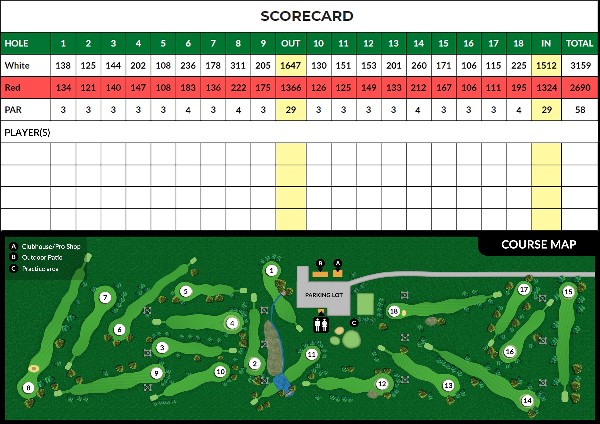 The number of Rules was reduced from 34 to 24 and many long-established Rules changed radically, from reducing search time to three minutes and dropping from knee height to being allowed to putt with the flagstick in without fear of penalty.
The number of Rules was reduced from 34 to 24 and many long-established Rules changed radically, from reducing search time to three minutes and dropping from knee height to being allowed to putt with the flagstick in without fear of penalty.
Now, The R&A and USGA have reverted to the four-yearly cycle which means another update with effect from January 1, 2023, although not quite on the same scale this time, as Grant Moir, director – Rules at The R&A, explains: “It’s not quite the dramatic change of 2019, where everyone was having to completely relearn a lot of things, but we have been busy refining and hopefully improving in certain areas.”
The feeling is that, although by and large the 2019 Rules updates have proved successful (although there will no doubt be dissenters in certain quarters!), there is always room for improvement. “That’s what we’ve been trying to do these last four years,” Moir says. “Some of this is refinement in areas where, perhaps on reflection, we felt we could have done a better job and others where we’re just continuing the process of trying to make the Rules easier to understand and apply and, where possible, to relax penalties or outcomes in certain situations.”
Before we get into the detail about the five key changes for 2023 (there are a number of other relatively minor changes, too), it’s worth noting that the Player’s Edition, which is usually distributed to golf clubs and golfers, is no longer being printed, with a real push towards the Rules of Golf app and other digital offerings. “We’re printing four million fewer books than last time round,” Moir explains, “and also our distribution operation in getting those around the world is greatly reduced, so that really fits with our emphasis on sustainability at The R&A.”
Handicap usage in stroke play
With the continued growth of score-posting technology following the adoption of the World Handicap System, players are no longer penalised for failing to put their handicap on their scorecard in stroke play. The committee will be responsible for ensuring the accuracy of each player’s handicap.

“Probably as a result of the challenges of Covid, there was more of an emphasis placed on electronic scoring. We’re not really suggesting that the scorecard will disappear, but the majority of scoring does now go through a computer terminal before and at the end of the round. Knowing that the handicap is correct in that physical inputting moment, it seems illogical to penalise the player if they happen to have got it wrong on the scorecard but the gross scores at the end of the day are correct. This amends Rule 3.3b(4).”
Club damaged during round
The Rule has been amended to allow a player to replace a club that is damaged during a round, provided the player did not damage it through abuse. “Last time we decided that you couldn't replace a club but could continue to use a damaged club or repair it if possible. But on review, this seemed to be unduly harsh. The bottom line is that if a club is damaged, it’s normally due to accidental means with no sense of trying to gain an advantage. We felt it would be more appropriate to say if you damage a club you can continue to use it, you can repair it if that’s an option – which might not necessarily be the case – and also now replace it (provided it wasn’t damaged through abuse) if you happen to be walking past the pro shop or car park at the turn, for example, and are able to do so without unduly delaying play. This falls under Rule 4.1a.”
Ball moved by natural forces
A new exception provides that a ball at rest must be replaced if it moves to another area of the course or comes to rest out of bounds after being dropped, placed or replaced.

“The penalty Rickie Fowler incurred in the 2019 Waste Management Open is a perfect example of an issue at the elite level feeding the changes in the Rules and also us recognising that the modern agronomic conditions might mean this kind of thing would happen more frequently where you have tightly cut surrounds of bunkers, or penalty areas in the Rickie Fowler case where, having taken relief and the ball being at rest and in play, it then moved due to natural forces back into the same penalty area and he had to take relief again with another penalty stroke. That outcome just doesn’t feel appropriate, so we started to discuss that at the time of the Fowler situation in Phoenix. It continued to happen during the discussion process and that convinced us that it was appropriate to introduce this exception where, if the ball has been placed, dropped or replaced into the relief area and then rolls to another area of the course (e.g., from the general area into a penalty area) due to natural forces, the appropriate outcome is just to lift the ball and put it back without penalty. That comes under Rule 9.3.”

